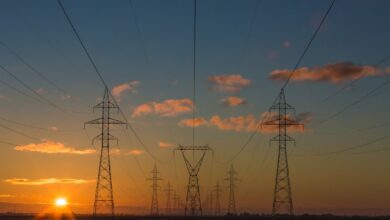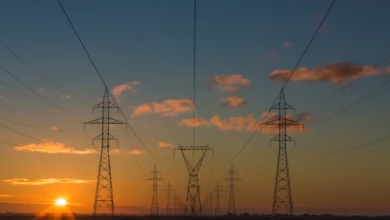Navigating the Future of Energy: Analyzing Fossil Fuels, Renewable Energy, and Innovations in Global Energy Markets

As the world grapples with climate change and the pressing need for sustainable solutions, fossil fuels—comprising oil, coal, and natural gas—remain at the center of global energy discussions. Despite the growing emphasis on renewable energy sources such as solar power, wind energy, and hydropower, fossil fuels continue to dominate energy production and consumption patterns across various markets. In this article, we will explore the current landscape of fossil fuels, examining production and consumption trends in global energy markets. We will also delve into the energy transition, highlighting how systems can balance fossil fuels with renewable energy and energy efficiency strategies to create a more sustainable future. Furthermore, we will investigate innovative technologies such as carbon capture, smart grids, and energy storage that promise to enhance energy security and optimize energy economics. Join us as we navigate the complex interplay between fossil fuels and the shift toward green energy, assessing the impact of energy policy, investments, and innovations on our planet's climate and future energy landscape.
- 1. The Current Landscape of Fossil Fuels: Production and Consumption Trends in Global Energy Markets
- 2. The Energy Transition: Balancing Fossil Fuels with Renewable Energy and Energy Efficiency Strategies
- 3. Innovations in Energy: Exploring Carbon Capture, Smart Grids, and the Future of Energy Security
1. The Current Landscape of Fossil Fuels: Production and Consumption Trends in Global Energy Markets
The global energy landscape is currently undergoing a significant transformation as fossil fuels, including oil, coal, and natural gas, remain dominant in energy production and consumption. In 2023, fossil fuels accounted for approximately 80% of the world's energy mix, although there has been a noticeable shift toward renewable energy sources. This transition is driven by a combination of energy policy changes, technological advancements, and growing concerns about climate change.
Oil continues to be a critical energy source, particularly in the transportation sector, where it fuels vehicles and shipping. However, the rise of electric vehicles (EVs) is reshaping demand, prompting energy markets to adapt. Natural gas is increasingly viewed as a cleaner alternative to coal, contributing to a gradual decline in coal consumption. The International Energy Agency (IEA) reports that natural gas is projected to play a pivotal role in the energy transition, with its use expected to rise in the coming years due to its lower carbon emissions compared to coal.
As part of the energy transition, the integration of renewable energy sources such as solar power, wind energy, and hydropower is becoming more prevalent. Energy innovations in energy storage and smart grids are crucial for maximizing the efficiency and reliability of these intermittent energy sources. Furthermore, investments in carbon capture technologies are gaining momentum as industries seek to mitigate their carbon footprints.
Energy security remains a critical concern, particularly for nations reliant on energy imports. Strategies to diversify energy sources and enhance domestic energy production, including offshore energy and bioenergy, are being prioritized. Additionally, the rise of distributed energy systems allows for localized energy generation, reducing dependence on traditional fossil fuel sources.
The dynamics of global energy trends indicate a clear shift towards a more balanced energy portfolio that includes fossil fuels, nuclear energy, and renewables. Energy economics will likely continue to evolve as countries invest in energy R&D and develop policies that support sustainable energy practices. As the world confronts climate change, the careful management of fossil fuel consumption, alongside the promotion of green energy alternatives, will be pivotal for achieving long-term energy efficiency and sustainability.
Through these evolving trends in energy production and consumption, the global community is poised to meet the challenges of energy demands while addressing the urgent need for a comprehensive energy transition. The interplay between fossil fuels and renewable energy will define the future of energy markets and influence global energy exports and imports in the years to come.
2. The Energy Transition: Balancing Fossil Fuels with Renewable Energy and Energy Efficiency Strategies
The energy transition is a critical process that seeks to balance the reliance on fossil fuels—namely oil, coal, and natural gas—with the increasing adoption of renewable energy sources and energy efficiency strategies. As global energy trends shift towards sustainability, it's essential to understand how this transition can be achieved while ensuring energy security and economic stability.
To successfully navigate the energy transition, a multifaceted approach is necessary. This includes investing in renewable energy technologies like solar power, wind energy, hydropower, and bioenergy, which are pivotal in reducing reliance on fossil fuels. In parallel, enhancing energy efficiency across various sectors can significantly lower consumption rates, making it easier to integrate clean energy sources into energy markets.
Energy innovations play a crucial role in this transition. Smart grids, for instance, facilitate the efficient distribution of energy, allowing for better management of renewable energy sources. These advanced systems can optimize energy storage solutions, which are vital for balancing supply and demand, particularly with intermittent sources like solar and wind. Additionally, advancements in nuclear energy and hydrogen energy present promising alternatives to fossil fuels, contributing to a diverse energy portfolio.
Moreover, energy policy must support these shifts by promoting energy investments that prioritize low-carbon technologies and carbon capture strategies. By doing so, countries can enhance their energy exports while reducing energy imports, ultimately fostering a more resilient economy. The integration of distributed energy systems can also empower communities to generate their own energy, further driving the transition towards green energy.
As climate change continues to pose significant challenges, the urgency for effective energy transitions has never been greater. Thus, the collaboration between governments, industries, and researchers in energy R&D is crucial for developing sustainable and economically viable solutions that address both current energy demands and future environmental goals.
In conclusion, balancing fossil fuels with renewable energy and energy efficiency strategies is not just about reducing greenhouse gas emissions; it is also about creating a sustainable energy future that supports energy security, economic growth, and resilience against climate change. The path ahead requires coordinated efforts to embrace innovative technologies and policies that advance the global energy transition.
3. Innovations in Energy: Exploring Carbon Capture, Smart Grids, and the Future of Energy Security
The landscape of energy production and consumption is rapidly evolving, driven by innovations that aim to address the challenges posed by fossil fuels and climate change. As we explore the advancements in energy, three pivotal areas stand out: carbon capture, smart grids, and the future of energy security.
Carbon capture technology is emerging as a significant solution to mitigate the environmental impact of fossil fuels. By capturing carbon dioxide emissions from sources like coal, oil, and natural gas, this technology helps to reduce greenhouse gases in the atmosphere. Various energy markets are beginning to invest in carbon capture initiatives, making it a critical component of energy policy aimed at achieving energy efficiency and sustainability (IEA, 2020). Furthermore, as nations transition towards renewable energy sources, carbon capture can play an essential role in balancing the energy transition.
Smart grids represent another innovation transforming energy management. These advanced electrical grids utilize digital technology to monitor and manage the flow of energy from all generation sources, including hydropower, solar power, and wind energy. By enabling two-way communication between utilities and consumers, smart grids enhance energy efficiency and help integrate distributed energy resources, such as electric vehicles and energy storage systems (U.S. Department of Energy, 2021). This integration not only improves energy reliability but also supports the growth of green energy, ensuring a more resilient energy infrastructure in the face of climate change.
Energy security is increasingly becoming a focal point for countries around the globe. With the rising interdependence of energy imports and exports, nations are prioritizing energy innovations that enhance their self-sufficiency. Investments in nuclear energy, hydrogen energy, and bioenergy are gaining momentum as countries seek to diversify their energy portfolios. Additionally, offshore energy developments are expanding, tapping into vast resources that contribute to energy security while reducing reliance on traditional fossil fuels.
In summary, the future of energy lies in innovative solutions that not only address the challenges posed by fossil fuels but also pave the way for a sustainable and secure energy landscape. By embracing carbon capture technologies, smart grids, and diversified energy sources, we can create a more resilient energy economy that supports both environmental goals and energy security.
References:
International Energy Agency (IEA). (2020). Carbon Capture Utilization and Storage. Retrieved from https://www.iea.org/topics/energy-supply/carbon-capture-utilisation-and-storage
U.S. Department of Energy. (2021). Smart Grid. Retrieved from https://www.energy.gov/oe/activities/technology-development/grid-modernization-and-smart-grid
In conclusion, the current landscape of fossil fuels reveals a complex interplay between production, consumption, and the pressing need for an energy transition. As global energy markets evolve, the reliance on oil, coal, and natural gas must be balanced with the integration of renewable energy sources and energy efficiency strategies to mitigate the impacts of climate change. Innovations such as carbon capture and smart grids are paving the way for a more secure and sustainable energy future, emphasizing the importance of energy R&D and investment.
The shift towards green energy, including solar power, wind energy, and hydropower, alongside advancements in energy storage and hydrogen energy, offers promising solutions to meet growing energy demands while reducing carbon footprints. However, navigating this transition requires robust energy policies that support both energy imports and exports, ensuring energy security and economic stability.
As we look ahead, the collaboration between traditional fossil fuel industries and emerging energy innovations will be crucial in shaping the future of energy economics. By embracing a diverse energy portfolio that includes distributed energy systems and offshore energy initiatives, we can create a resilient and sustainable energy landscape that not only addresses immediate needs but also prioritizes long-term environmental stewardship. The path forward is not just about reducing reliance on fossil fuels; it is about fostering a holistic approach to energy that encompasses efficiency, sustainability, and security for generations to come.





